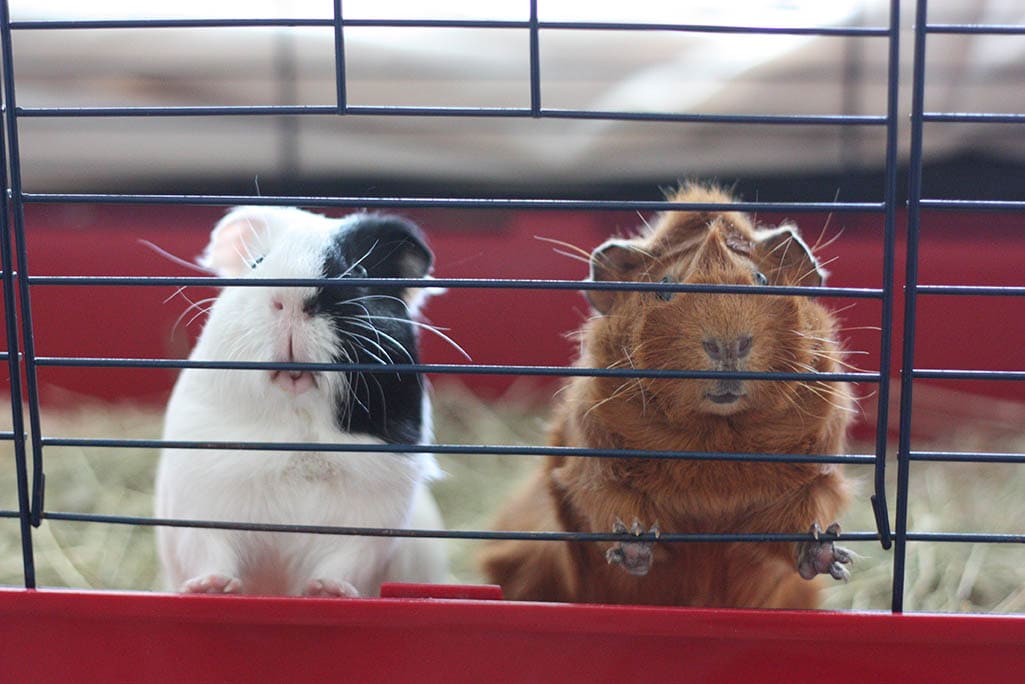
Whether you are planning on breeding your guinea pig or experiencing an unplanned guinea pig pregnancy, you will undoubtedly want to know how many babies you can expect in a litter. A guinea pig sow can give birth to 1 to 6 pups per litter, but most litters consist of 2 to 4 pups. First-time mothers tend to have smaller litters.
Guinea Pig Reproduction and Gestation
Guinea pigs have a lifespan of 4 to 8 years and reach sexual maturity at an early age. Females will typically reach full sexual maturity at approximately 4 to 6 weeks of age. Males take a little longer and are typically sexually mature by 8 to 9 weeks of age.
The gestation period of a sow ranges from 59 to 72 days, with an average of 65 days. So, your guinea pig will be pregnant between 9 and 10 weeks.
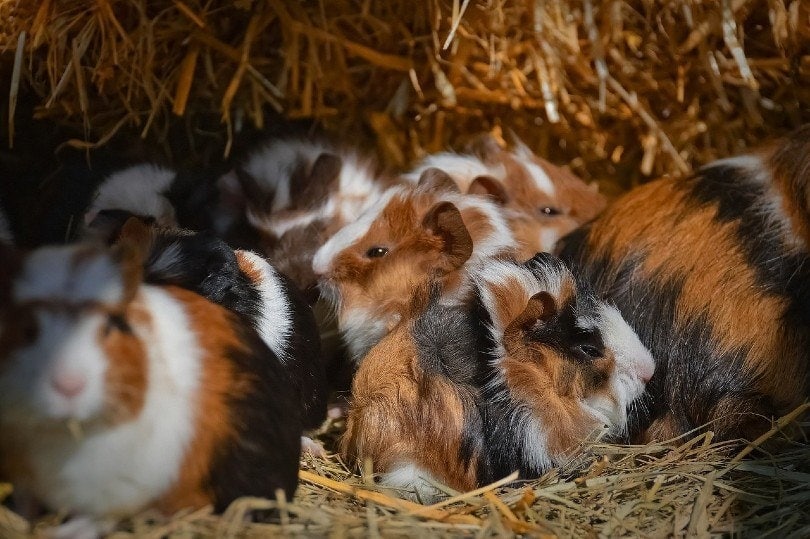
How to Tell If a Sow is Pregnant
Determining whether or not the sow is pregnant is very important, as she will need fed a proper diet and monitored for any potential complications. Having your veterinarian available to confirm pregnancy, guide you through the care, and assist as needed during the process is key to a happy and healthy pregnancy.
Once she is about 2-3 weeks into the pregnancy, you may be able to gently palpate the sow’s abdomen and feel the growing pups. Guinea pigs are known for becoming exceedingly large during pregnancy and can even double their weight during this time.
Pregnant sows should be separated from others, especially any male guinea pigs. The hormones from pregnancy can alter her behavior so it is best to keep her safe and comfortable away from cage mates.
Female guinea pigs can go back into heat as soon as 15 hours after giving birth. Males should be kept away from her to prevent a repeated pregnancy from occurring immediately following birth.
Birthing Process
Guinea pigs do not display nesting behavior before giving birth as most other animals do. However, they do exhibit some telltale signs that delivery is near.
The pregnant sow may become much less active a few days or up to a week before giving birth. If you notice lethargy toward the end of the gestation period, chances are labor will begin within a few days.
Guinea pigs can give birth at any time but typically give birth during the daytime. In a healthy pregnancy, the entire birthing process typically takes about 30 minutes once labor begins.
Intervention is not recommended but if labor is prolonged and the mother is not successfully delivering all pups, you may need immediate assistance from a veterinarian.
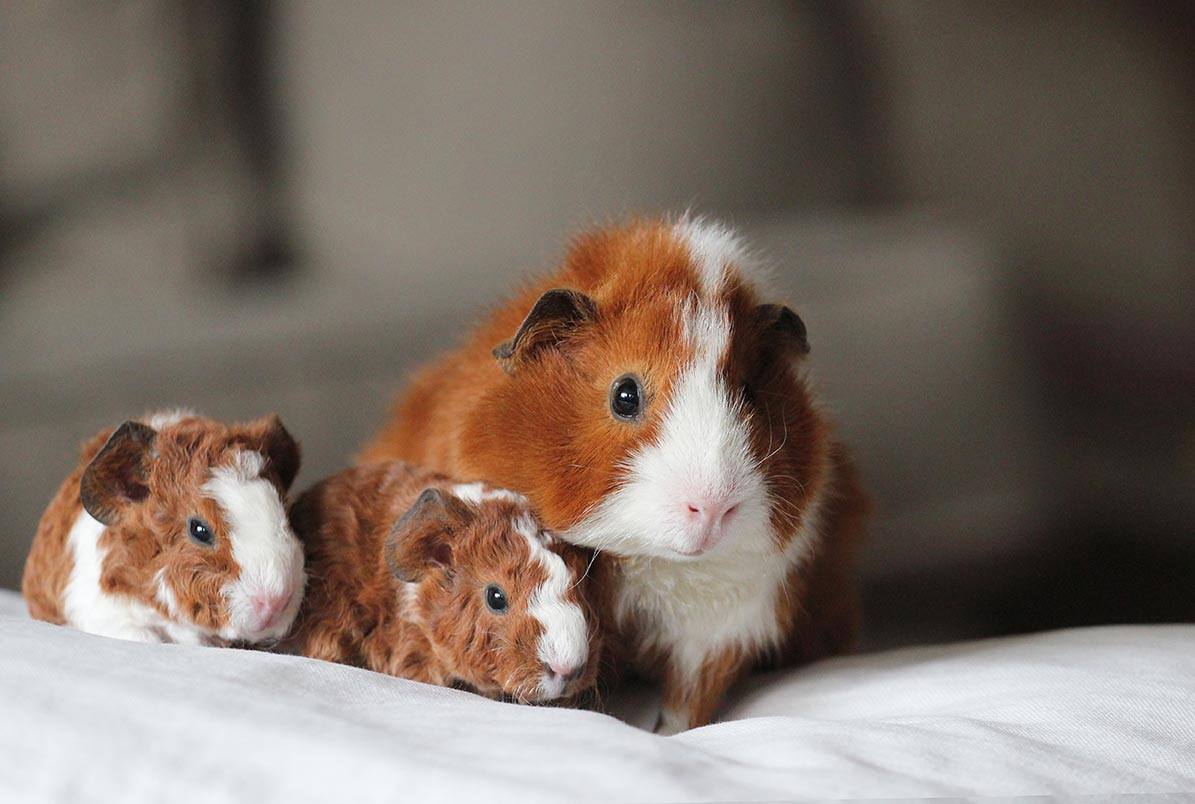
Potential Birthing Complications
While some healthy guinea pigs can give birth naturally and unassisted, these little rodents are notorious for having birthing difficulties. Having a veterinarian available throughout the pregnancy and birth process is highly recommended.
Veterinary intervention may be necessary in some cases. Some females may require birthing assistance, medication, and even a cesarean section in more extreme cases.
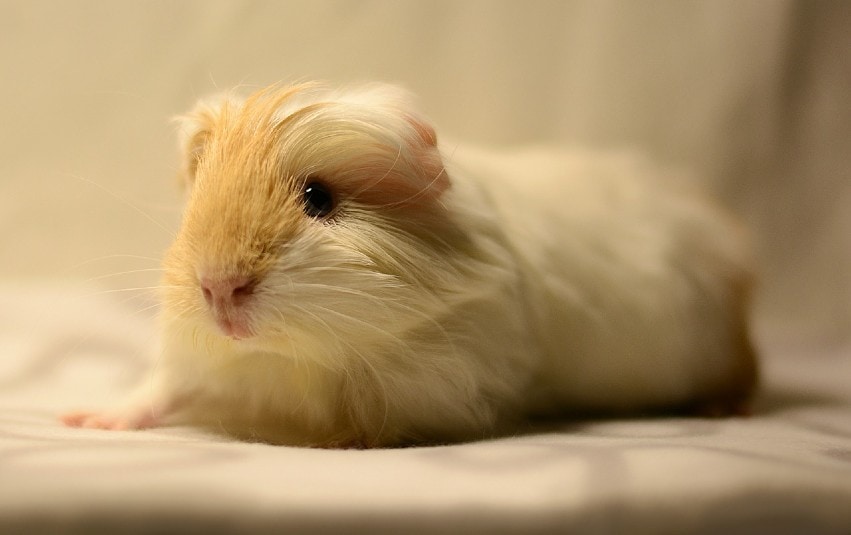
How Many Pups Typically Survive in Each Litter?
Stillbirths are not uncommon for guinea pigs and can happen for a variety of reasons. There is no way to know for sure how many pups will be delivered or how many will survive in each litter.
Can the Father of the Litter Have Access to the Pups?
Males should be kept away from pregnant sows, especially after they have just given birth. Since females can go into heat and become pregnant in as little as 15 hours after delivery, no male should be available to impregnate her.
Females need recovery time after giving birth and back-to-back pregnancies can be riskier to their health. Not only do you want to avoid a repeated pregnancy, but males may also cause stress to the female and could potentially injure her or the pups, as he will be trying to mate again.

Do Guinea Pigs Kill Their Babies?
It’s not uncommon for some rodent species to kill their offspring. Although this is very uncommon with guinea pigs, they may kill and/or eat their babies. Though a rare occurrence overall, this is typically observed when the female is malnourished or has given birth to repeated back-to-back litters.
Caring For a New Litter
After delivery, the mother will eat the placenta, chew off the umbilical cords and begin caring for her pups. It’s recommended to leave the sow to care for her pups and wait at least a week before touching the newborns.
Once the pups are old enough to handle, it is best to do so gently, as they are very fragile in the beginning. Keep handling short and within the comfort of the mother, as she will be protective of her young.
The pups will nurse and be under the care of their mother until 2 to 3 weeks of age even though they have begun eating solid foods. Males should be separated from their mothers and female siblings no later than 3 weeks of age. Females can remain with their mothers for up to 4 weeks of age.
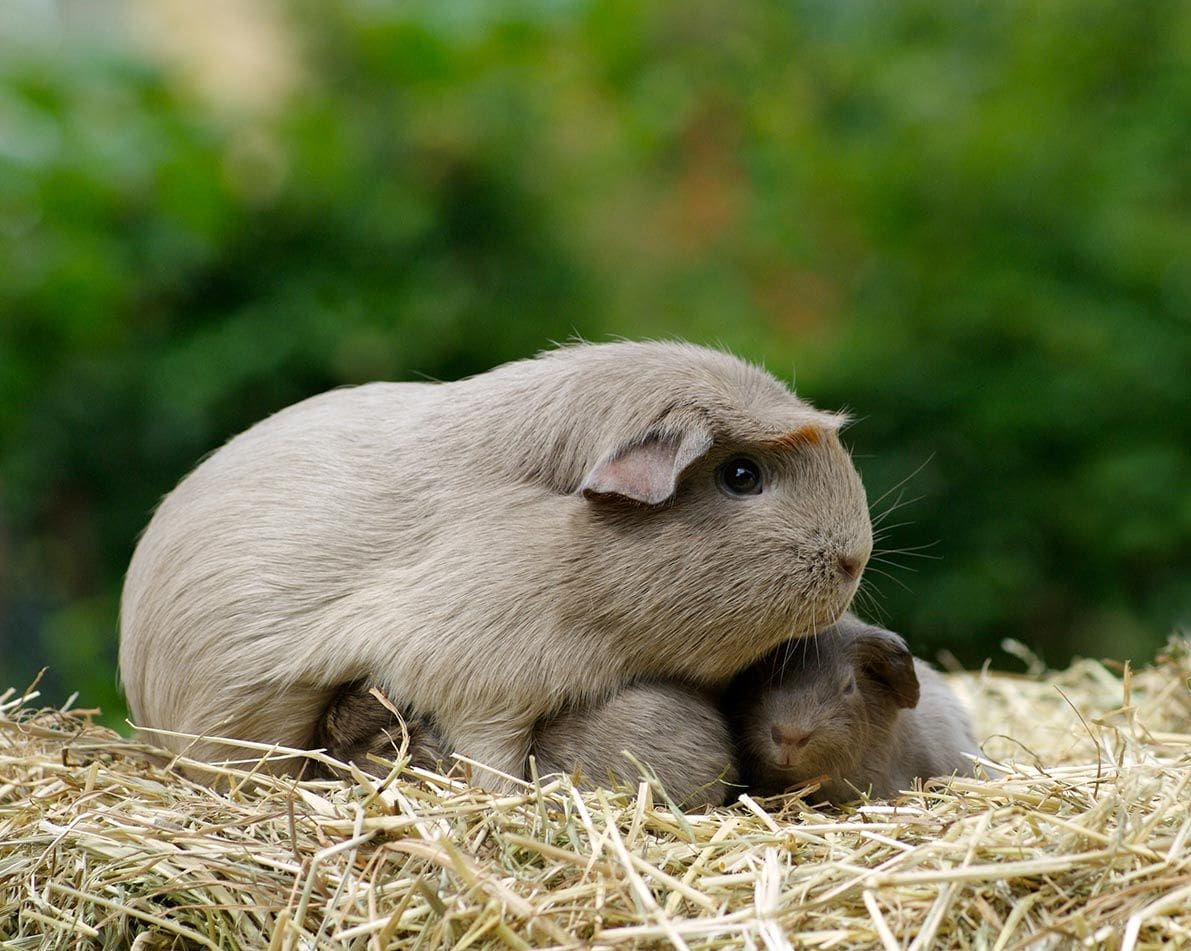
Conclusion
On average, female guinea pigs will give birth to 2 to 4 pups per litter. Litter sizes can vary from 1 to 6 pups and as with any animal, stillbirths can happen. It is important to provide your pregnant sow with a healthy diet and a comfortable, stress-free environment. It is best to have your guinea pig under the care of a veterinarian during this process for guidance through the pregnancy and if any complications were to occur.
Featured Image Credit: Myagi, Pixabay

